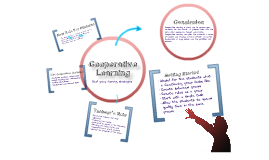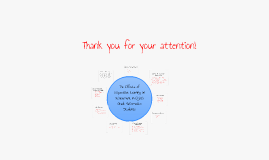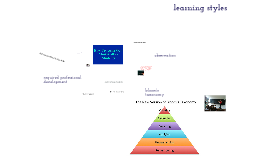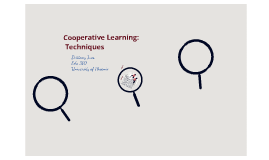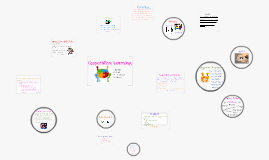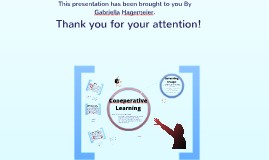Cooperative Learning
Transcript: Cooperative learning is a staple in education. No matter how the groups are assembled the students must work together, help one another, encourage one another, offer constructive criticism, and rely on one another to recieve the desired grade (Burden & Byrd, 2010) This presentation has been brought to you By Gabriella Hagemeier. According to Burden and Byrd (2010): Challenges with differentiation. Cooperative learning involves students working together in small, mixed-ability learning teams to address specific instructional tasks while aiding and supporting each other during the learning process. 1. Individualized testing is still implemented which leaves each student accountable for their own grade. 2. Students have a chance to learn from one another, which is very affective. 3. Most students will do their best to achieve high scores for the sake of the team. Challenges with differentiation on this method. Reference Differentiation in this method. 1. Group members may rely on the test score of one student to improve their own instead of working their hardest to achieve a good grade for the team. 2. Students that do not wish to work together have the opportunity to ignore one another completely. 3. Creating groups that are not only diverse but have the potential to be successful. Differentiation in this method. The jigsaw method fosters full participation from all members. There is no way to skate off of the work of others - in fact, if a student does not fully particiapte his or her team will suffer. In this method groups are usually about 5 to 6 students large that work on academic material that has already been broken down (Burdern & Byrd, 2010). Each team member is assigned one portion of the assignment and must become an expert on that subject (Burder & Byrd, 2010). Members from opposing teams with the same topic get together to discuss it in "expert groups" after researching or learning about it (Burder & Byrd, 2010). Once expert groups have met to share information the original teams reform. When the original teams reform each member takes the time to explain his or her portion of the assignment to the rest of the team (Burder & Byrd, 2010). All portions are necessary to complete the assignment, therefore all members must be proactive participants and listen closely to their peers. The Jigsaw method does not allow for one student to do all the work or snub other members, because of this jigsaw groups must be supportive and attentive to one another. Thank you for your attention! When students work together they have the opportunity to teach one another what works for them when trying to complete assignments associated with the topic. This method is highly effective when applied to math lessons. Governing Groups The biggest challenge with differentiation in this method is capable but lazy students choosing the easiest portions of the group project and leaving the hardest portions for the academically slower members of the group. Challenges Challenges This method allows students to set the criteria for their own project as long as it aligns itself with the given goal. This allows each group to work in the way that is best for its members. 1. If one student does not participate the group will siffer. 2. Dominance may still be an issue. 3. Students that are slower academically may feel intimidate by the task set before them. 1. The fact that all students will receive the same grade prompts students to encourage one another to work hard. 2. This method allows students creativity and strengths to shine. 3. Students must work together from the beginning to the end often forming close bonds. Burden, P. R., & Byrd, D. M. (2010). Methods for effective teaching: Meeting the needs of all students (5th ed.). Boston, MA: Pearson/Allyn & Bacon. Differentiating this method. The groups in this method are usually ofur large with a mixture in performance level, gender, and ethnicity (Burder & Byrd, 2010). In this method the teacher first presents a lesson before dividing the class into groups Burder & Byrd, 2010). Once the groups have been set the members work together to ensure that all members have mastered the lesson (Burder & Byrd, 2010). After teams have met and the members have helped one another master the topic the students take individual tests on the lessons content. The test scores are then totaled into a team score (Burder & Byrd, 2010). There are pre-determined award charts for team scores. The incentive of an award causes group members to do their best to educate everyone on the team so that the team can be rewarded. This method maintians group and individual accountability. Benefits Dominate students may set the pace of the team project without allowing the other team members to voice their opinions. Dominate students may become dictators. Criticism of one another'a work may become intense since everyone will receive the same grade for the assignment. In this method groups are chosen by the teacher that






